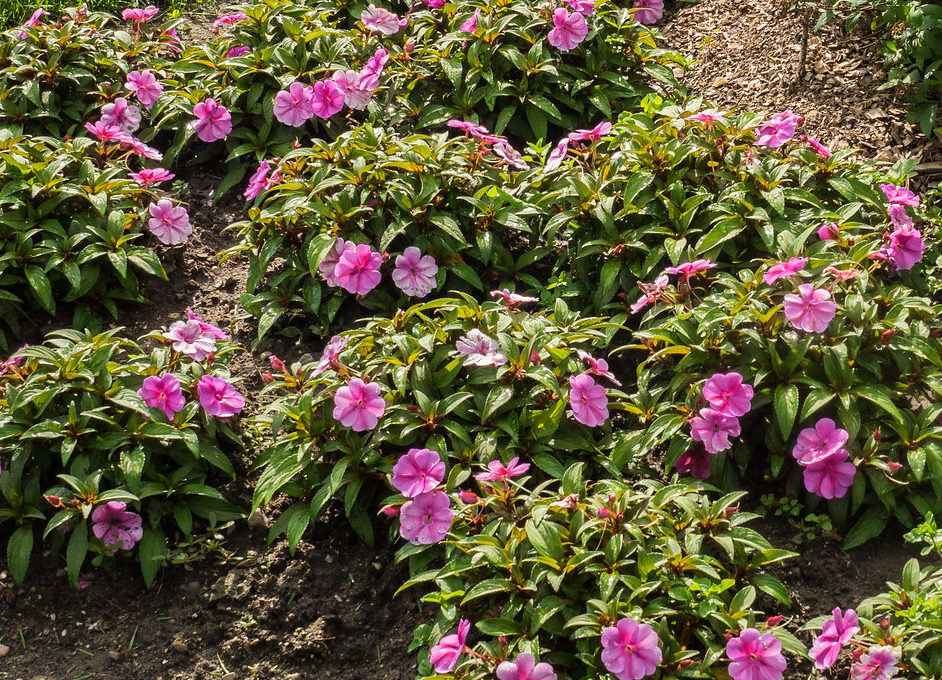You can simplify learning how to plant sunpatiens into propagation, planting, and caring. Sunpatiens or Impatiens x hybrida is a beautiful annual plant that you can use as ground cover and more. The Japanese seed company Sakata developed this hybrid from traditional impatiens and hawkery, a larger type of Impatiens that tolerate heat well.
Gardeners love the resulting qualities of sunpatiens, which make these plants worthy of cultivating. Sunpatiens are hardy in zones 10a to 11a, and they tolerate challenging conditions, making them low maintenance. However, you can grow quality sunpatiens and experience no drawbacks in their development if you use a greenhouse.

For example, starting most plants in the greenhouse is a sure way to help them survive this vulnerable period.
How To Plant Sunpatiens For Beginners
Propagation
You can propagate sunpatiens from seeds or stem cuttings, but most gardeners prefer using cuttings. You can ensure a healthy parent plant for these cuttings by growing the sunpatiens in the greenhouse. However, you can purchase them from trusted sources if you are only starting.
Cuttings
Similar to propagating cuttings from other flowering plants, you want to use healthy parent plants. Choose those that have the characteristics you want to clone. After all, the most significant advantage of propagation from cuttings over seeds is that you will get the exact copy of the parent plant with them.
Cut a 3-inch non-flowering stem below a node, leaving two on the stem itself. You can promote rooting by dipping the end in rooting hormone before inserting it in a pot or planting tray. Remember that the medium should be moist and then place the container in an area out of direct sunlight but still bright.
You can also root cuttings in a container of water. Remove the lower leaves of the cutting and dip it in water, submerging the first couple of nodes. Replace the water to keep it clean, and then you can transfer the cuttings once they are rooted.
Seeds
You can let some of your flowers seed and then sow them the next spring. However, sunpatiens don’t produce a lot, and the resulting plant’s traits won’t be predictable as with cuttings. Still, propagating sunpatiens from seeds is cost-effective.
The best way to root sunpatiens from seeds is indoors six to eight weeks before your state’s last frost date. Afterward, harden the seedlings before transplanting them outdoors to prevent shock and stress.
Planting
The University of Arkansas System Division of Agriculture recommends sunpatiens for beds and patios because of their size. A useful tip to get tall plants is by planting them 12 inches apart. On the other hand, place them further at around 2 feet away, and you can achieve shorter sunpatiens.
You also want to prepare the already well-draining and moist soil by loosening it and adding a slow-release fertilizer to support the plants before planting in late spring. This way, the sunpatiens have established themselves in preparation for the upcoming temperatures. When choosing a location, select an area that can provide sun for more than half a day, preferably 6 hours.
Remember that sunpatiens are sun tolerant, and if you’re starting with seeds, light is essential for germination. States like Florida, where the weather is hot and humid, make an excellent growing location for sunpatiens. This is why it’s also possible to be productive year-round in Florida as well.
Caring
The University of Florida praises the sunpatiens hybrid because they are easy to grow and take care of. However, they emphasize on the plants’ water requirements and to always check the moisture every day. If you live in an area that experiences heat waves, then you should expect more frequent watering.
In the greenhouse, you can maintain consistent moisture using drip irrigation. This method has shown its effectiveness in the hot weather of Mississippi every summer. Failure to provide the water needs of sunpatiens can cause wilting.
What about feeding sunpatiens? These plants will still flower without fertilization, but you can always provide them to enhance blooming. This is best if you want to maintain regular budding of new flowers to replace the wilted ones, and even water-soluble fertilizers will help your sunpatiens survive throughout summer.
Compared to other flowering plants, a significant advantage of sunpatiens is that they cannot develop downy mildew. Therefore, caring for them and maintaining the environment is not as tricky. Still, don’t neglect the comfortable growing conditions for sunpatiens, such as temperatures between 32 to 117°F.
Conclusion
Hybrid plants possess excellent characteristics, both in aesthetics and functionality. Therefore, knowing how to plant sunpatiens, an impatiens hybrid by Sakata, is worth adding to your gardening arsenal. Start by choosing your propagation method, learning proper planting, and what to remember for caring for sunpatiens.
You can start sunpatiens from seeds or cuttings, with the latter being more convenient and reliable if you want to clone specific plants. Afterward, plant the sunpatiens strategically to get your ideal height. The location should provide sun, and you should be consistent in watering them.
In caring for sunpatiens, they are relatively easy and not picky. This hybrid is resistant to downy mildew and can tolerate hot and humid areas. Additionally, you can consider growing sunpatiens in the greenhouse if you have challenging conditions in your area.
